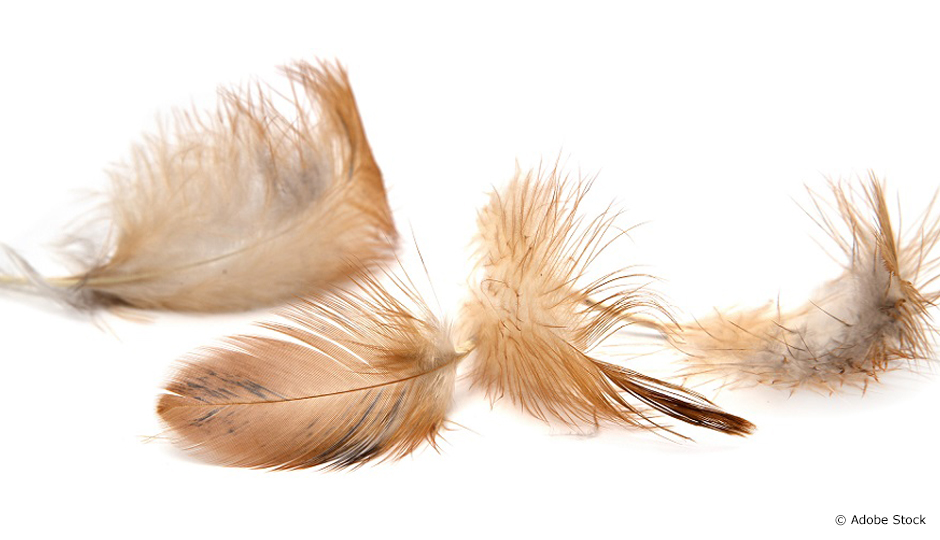Québec farms generate 75 million tons of chicken feathers every year! Part of this is converted into feather meal and added to animal feed, but the rest often ends up in landfills. Marie-Josée Dumont, a professor in the Department of Bioresource Engineering at McGill University, couldn't imagine letting such a plentiful free resource go to waste.
Québec farms generate 75 million tons of chicken feathers every year!
Knowing that chicken feathers are 98% keratin—a water-insoluble protein—and that proteins are a key element for creating absorbent materials, the researcher and two of her students decided to use feather byproduct to synthesize bio-based superabsorbent hydrogels. To that end, they modified the structure of the keratin to absorb certain liquids, such as motor oil and diesel. The result: in the laboratory, their keratin-based hydrogels presented a greater oil holding capacity than polypropylenes derived from petrochemicals. Dumont and her team are now working on enhancing the performance of these hydrogels for wide-scale use. Possible uses include agriculture water conservation and fixing heavy metals found in soil or in watercourses.
Professor Dumont used the same approach to valorize another by-product: zein, obtained during the production of vegetable oil. The structure of this protein was modified by hydrolysis to adsorb copper, a heavy metal found in the food chain. Early trials show that zein-based hydrogels are comparable to their chemical counterparts. The researcher sees a potential application in water treatments plants, among others. It just goes to show that nothing should go to waste…




